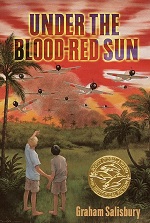As COVID-19 deaths spiked in 2020, Suzanne Firstenberg’s public art installation "In America: How could this happen…"
History Explorer Results (44)
Related Books (4)

Grade Range:
K-12
Resource Type(s):
Artifacts, Primary Sources
Date Posted:
9/24/2009
La Llorona, or the Weeping Woman, is the frightening figure of a heartbroken woman who drowned her children and haunts the night, especially by riversides. Her story is repeated to children throughout Latin America, with numerous versions circulating throughout Mexico and the American Southwest.

Grade Range:
K-12
Resource Type(s):
Artifacts, Primary Sources
Date Posted:
9/20/2009
Mariachis, groups comprised of vocalists, trumpeters, violinists, and various bass and guitar players, are today considered Mexico's traditional musical ensemble. Originally from the state of Jalisco, mariachi music transformed itself from a regional to a national music between the 1930s and 1950

Grade Range:
K-12
Resource Type(s):
Artifacts
Date Posted:
9/20/2009
The French-born artist Jean Charlot spent his early career during the 1920s in Mexico City. His 1948 lithograph depicts a scene from the domestic life of a Mexican indigenous woman, a favorite theme of the artist. Household work-without the aid of most, if any, electrical appliances-was a full-ti

Grade Range:
K-12
Resource Type(s):
Artifacts, Primary Sources
Date Posted:
9/19/2009
This Barbie doll is costumed and accessorized as a representation of The Virgin of Caridad del Cobre, Patron Saint of Cuba. The doll wears the ornate blue and gold robe characteristic of the Virgin in other depictions in religious cards, carvings, and statues. The figure has a crown and is holdin

Grade Range:
K-12
Resource Type(s):
Artifacts, Primary Sources
Date Posted:
9/19/2009
This is a miniature version of the barril de bomba, the kind of drum used in performances of the Afro-Puerto Rican musical tradition known as bomba. While bomba can be used as the generic name for a number of rhythms, its real meaning is about the encounter and creative relationship between dance

Grade Range:
K-12
Resource Type(s):
Artifacts, Primary Sources
Date Posted:
9/19/2009
In Puerto Rico, the traditional center of lace making is the town of Moca. There, lace is made by hand on bobbins and is known as mundillo. Bobbin lace is a complicated process of weaving together different spools of thread held in place by pins. Lace making today is undergoing a resurgence of po

Grade Range:
K-12
Resource Type(s):
Artifacts, Primary Sources
Date Posted:
9/19/2009
This variety of maracas, made of cow leather and sinew, is used in musical genres like guaracha, son, and salsa. They are of different sizes, so that one is pitched higher and the other, lower. In contrast, the Afro-Puerto Rican musical tradition known as bomba uses a larger, single

Grade Range:
K-12
Resource Type(s):
Artifacts, Primary Sources
Date Posted:
9/19/2009
Lace-making and sewing were more than utilitarian projects. They allowed young girls to express themselves artistically while learning discipline and attention to detail. This embroidered linen and lace pillow sham belonged to Miguel Roses at the turn of the 20th century. Bird and flower designs

Grade Range:
K-12
Resource Type(s):
Artifacts, Primary Sources
Date Posted:
9/19/2009
The yo-yo maraca is a Puerto Rican novelty that unites both a spinning top and a musical instrument of native origin called a maraca. The name "yo-yo" is a misnomer, since the toy functions like a spinning top.

Grade Range:
K-12
Resource Type(s):
Artifacts, Primary Sources
Date Posted:
9/18/2009
This engraving shows Hernán Cortés (1485 1547), the Spanish captain who headed the conquest of the Aztec Empire. He became a part of popular mythology the moment he arrived in Mexico in 1521. Cortés had spent time in Cuba killing and enslaving its indigenous inhabitants and administering the n













